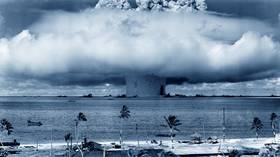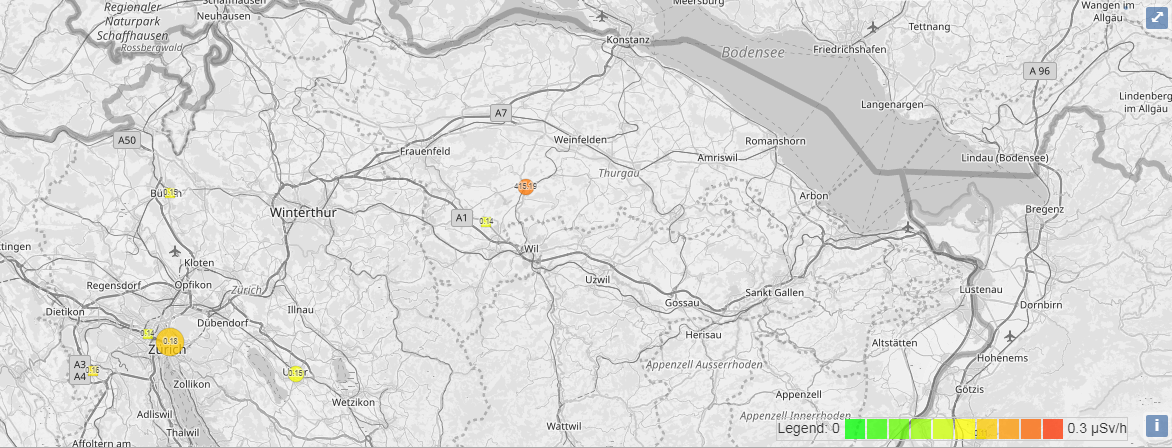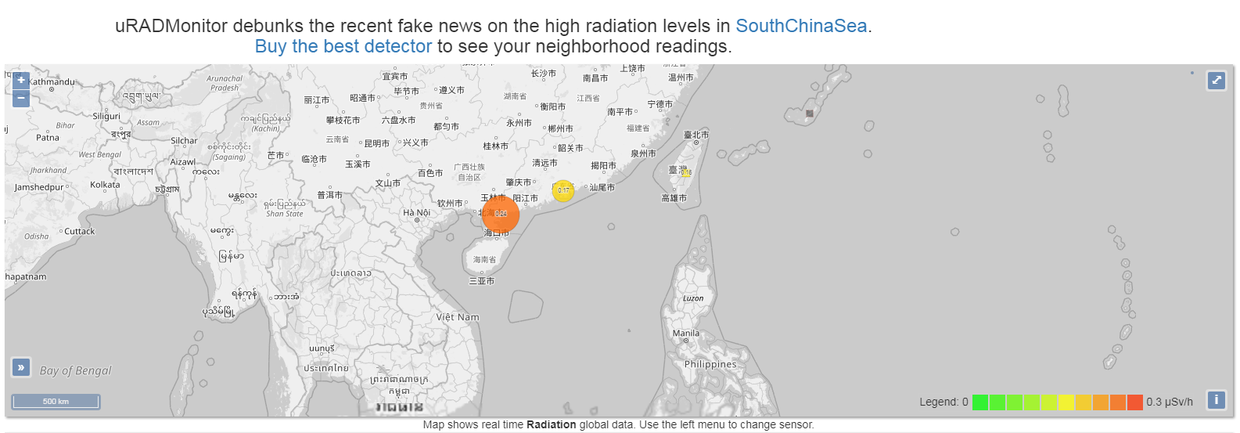‘NUCLEAR INCIDENT’ in South China Sea that no one actually noticed hits the headlines (Fake news 101)

Brewing a solid piece of fake news is tricky – it has to be hot enough to take off and believable enough to not get debunked at once. The scare around a “radiation incident” in the South China Sea appears to be almost perfect.
The story of the ‘incident’ in the South China Sea was broken by the Hal Turner Radio Show on Wednesday, promptly spreading on social media – and eventually getting into more respectable news outlets, and even invoking official reaction.
The ‘news’ piece by the right-wing outlet, that has been repeatedly accused of spreading fake news and conspiracy theories, was sensational indeed. It claimed there was a “significant undersea explosion” in the contested waters of the South China Sea, that was followed by an increase in background radiation across the coast. The article was illustrated with a map of where the “undersea explosion” occurred, as well as another one, purportedly showing growing “radiation levels.”
The ‘news’ piece was also littered with a bunch of allegations that Beijing was sending a message to the US by detonating a small nuclear device in the troubled waters and so on.

Looks scary, right?
Upon closer examination, however, the story did not look solid at all. It cited unnamed “military sources” and readings from some“oceanographic instruments,” claiming that a 10 to 20 kiloton nuclear device went off at a depth of some 50 meters. Basically, it presumably occurred on the surface – and it’s nearly impossible that no one actually heard the blast or saw the flash in the region, which enjoys busy maritime traffic.
While anonymous military and intelligence sources have been quite a thing lately, no seismic events – inevitable in the case of a real nuclear explosion – were registered in the region. Moreover, the location of the “blast” appears to be pointing right at the default Google Maps tick pointing to the South China Sea.
Also on rt.com Here’s what happens to a car in a nuclear-force blast (VIDEO)The radiation readings, for their part, were taken from the uRADMonitor website. While it boasts a likely sounding name of the Global Environmental Monitoring Network, in reality the website is an open-source project for amateur radiation-measurement enthusiasts. The website sells devices to measure the radiation, yet it allows contributors to utilize home-made instruments as well. Needless to say, such an approach makes it a very unreliable source of information, since it’s basically provided by anonymous users, who might – and likely do – lack any proper training for taking such measurements and utilize potentially malfunctioning monitoring devices.
The radiation readings in the region – even if they were accurate – were not that scary either, with the highest measuring merely 0.24 microsieverts per hour, which lies within natural radiation levels and is not considered harmful to humans. Ironically, according to uRADMonitor, at the time of the alleged “incident” radiation readings spiked in some parts of Switzerland, reaching several hundred microsieverts per hour. None, however, was eager to produce ‘news’ about it – and local radiology enthusiasts probably need their devices fixed.

Official denial only makes fake news harder
As the whole story easily falls apart after the slightest poke, some news outlets were eager to debunk it. The uRADMonitor also distanced itself from the scare, posting a special disclaimer on its website.
Still, the rumors of a “nuclear incident” were way too serious a matter to be ignored by government officials altogether. Unfortunately, any sort of official reaction only added fuel to the fire for alarmists.

For instance, Russian consumer watchdog Rospotrebnadzor released a brief statement on the issue on Friday, titled “On the radiation incident in South China Sea.”
“According to information received from Global Environmental Monitoring Network, an increase in the level of background radiation in connection with a radiation incident has been recorded in the South China Sea,” the watchdog said, adding that it “increased monitoring of the radiation situation in the border areas” but no actual threat to Russia’s population has been detected.
Rospotrebnadzor’s message might not have been the most aptly-worded one, yet it basically said that they had heard the rumors and ramped up monitoring. Still, certain news outlets managed to spin it like the confirmation of the “radiation incident,” rolling out articles with such outlandish headlines as “South China Sea shock: Russia spots mystery ‘radiation incident’ as nuclear fears soar” or “Russian Watchdog Detects ‘Radiation Incident’ in South China Sea.”
Also on rt.com No, this Russian family is not looking at a nuclear explosion near their city, dear MSM viewersThere was “no reliable information” about the incident immediately available, Sergey Naryshkin, the Director of the Russian Foreign Intelligence Service, told RIA Novosti when asked about the reports. Hence, Moscow proceeded to “check and double-check” the rumors, he added.
Think your friends would be interested? Share this story!












